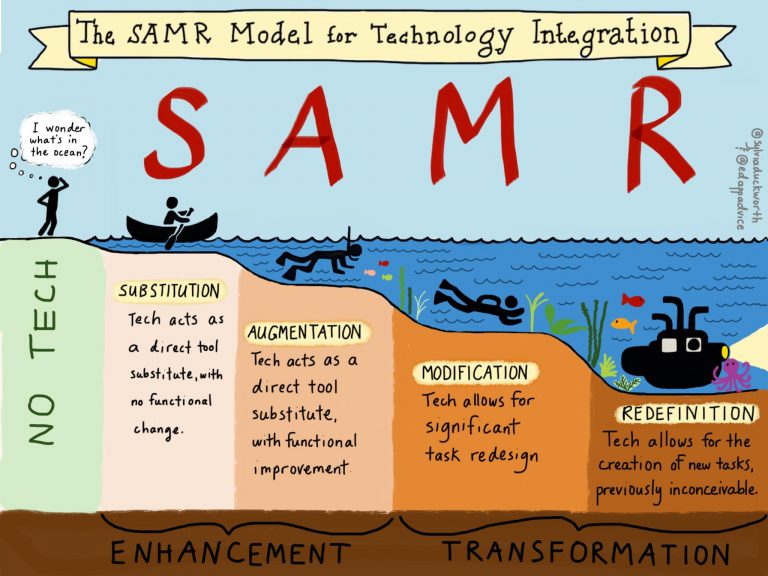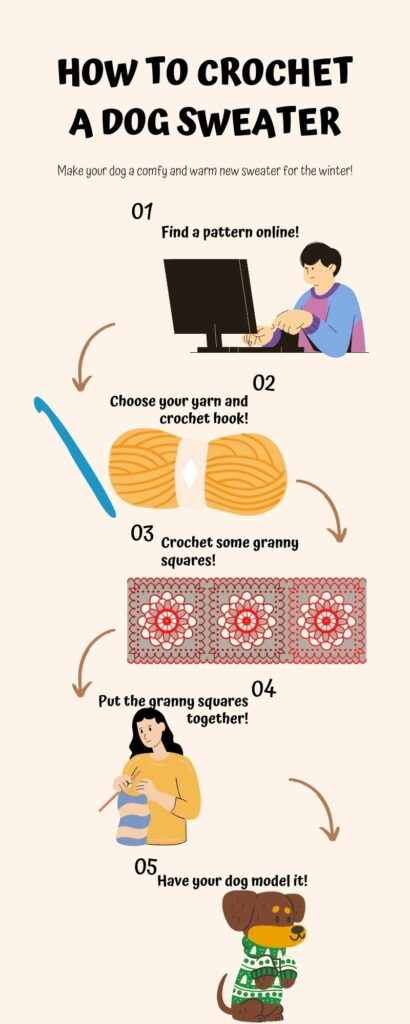SAMR Theory of Technology Adoption
The SAMR theory of technology adoption is a tool that is used to help teachers evaluate how they are using technology in their classroom. Is technology being used to enhance or transform the learning in the classroom? This model can be seen as a ladder, with a dotted line showing where the use of technology shifts from being enhancement to transformation. SAMR begins with the use of technology, with the first two parts being enhancement and the second two being transformation. First comes the S, which stands for substitution. This is when the technology is being used as a direct substitute for a learning tool without changing the function of the tool. Next is the A, standing for augmentation. With augmentation, the technology is still being used as a substitute for a learning tool, but this substitution also improves the function, therefore augmenting the tool. Substitution and augmentation are both seen as enhancements, not transformations. After augmentation comes the M, which stands for modification. This is when technology is used to help redesign a task. The final step is the R, standing for redefinition. This is when technology is used to create completely new tasks that would not be possible without the use of technology. Modification and redefinition are seen as transformation tasks as they can completely change activities in education.
This model can help you evaluate technologies that you are thinking of using in your classroom because it can help you critically reflect on how the technologies can help learners. Do you want to completely redefine every task, or are you just looking for substitution for some? By looking at how the technology is being used, you can ensure that you are keeping a good balance between enhancement and transformation. This will help you create a learning environment that works for everyone, giving the space for adaptability. This can also help with accessibility, as it can help teachers reflect on possible accessibility pros and cons that can come with various technologies.

Sketchnoting in Intermediate and Middle Grades
In any classroom, it is usually very common to see at least a few students doodling in their notebook while listening to a lecture or taking notes. Since this type of behaviour is so common, it is good to reflect on how it can be used to help students with comprehension! This is where sketchnoting can play a positive role in the classroom. Sketchnoting allows students to combine their notes with drawings in a way that helps them understand the information much more clearly. These sketchnotes do not include word-for-word transcriptions of the information being presented to students, but rather use summary note-taking. Pairing this summary note-taking can help students grasp the information as they need to understand it enough to be able to provide a general idea of the meaning, not just memorize and regurgitate specific details onto the page. The doodling that comes with creating a sketchnote can also help engage students who tend to lean more into the arts and creative practices, as they are able to illustrate the information in a way that works and is clear to them. This can help some students more than just having written notes. In intermediate and middle grades, this could be used a lot. These students tend to be taking classes where note taking is required, and from what I have seen this also generally tends to be where I see a lot of children doodling in class. Giving classes an engaging note-taking task, such as sketchnoting, can increase engagement in the classroom and help make it more accessible for students who may have difficulty with written note-taking. One barrier that may need to be reviewed in the classroom is students spending too much time trying to perfect their drawings. This could make this task stressful for some, as they may want their doodles to be perfect. It would be important to emphasize that these notes are just for themselves, and do not need to be perfect! If the task is proving too stressful, it may not work in that classroom. Similarly, some students may feel too self-conscious to draw on their sketchnotes, worrying that their drawings won’t be good enough.
I think that technology could be used as well to help with this problem, with programs like Canva being used to create infographics. These infographics can work as digital sketchnotes, allowing students to search photos to pair with their summary notes rather than making them draw the pictures themselves. Providing this option to students could also help make the activity more accessible, as not everyone may be able to sketchnotes. Especially with intermediate and middle grades, I think that having the online option could help alleviate some stress from the assignment, allowing students who may feel self-conscious or stressed about their doodles to have another way to express their knowledge.
Example Sketchnote

Example Infographic

Leave a Reply
You must be logged in to post a comment.